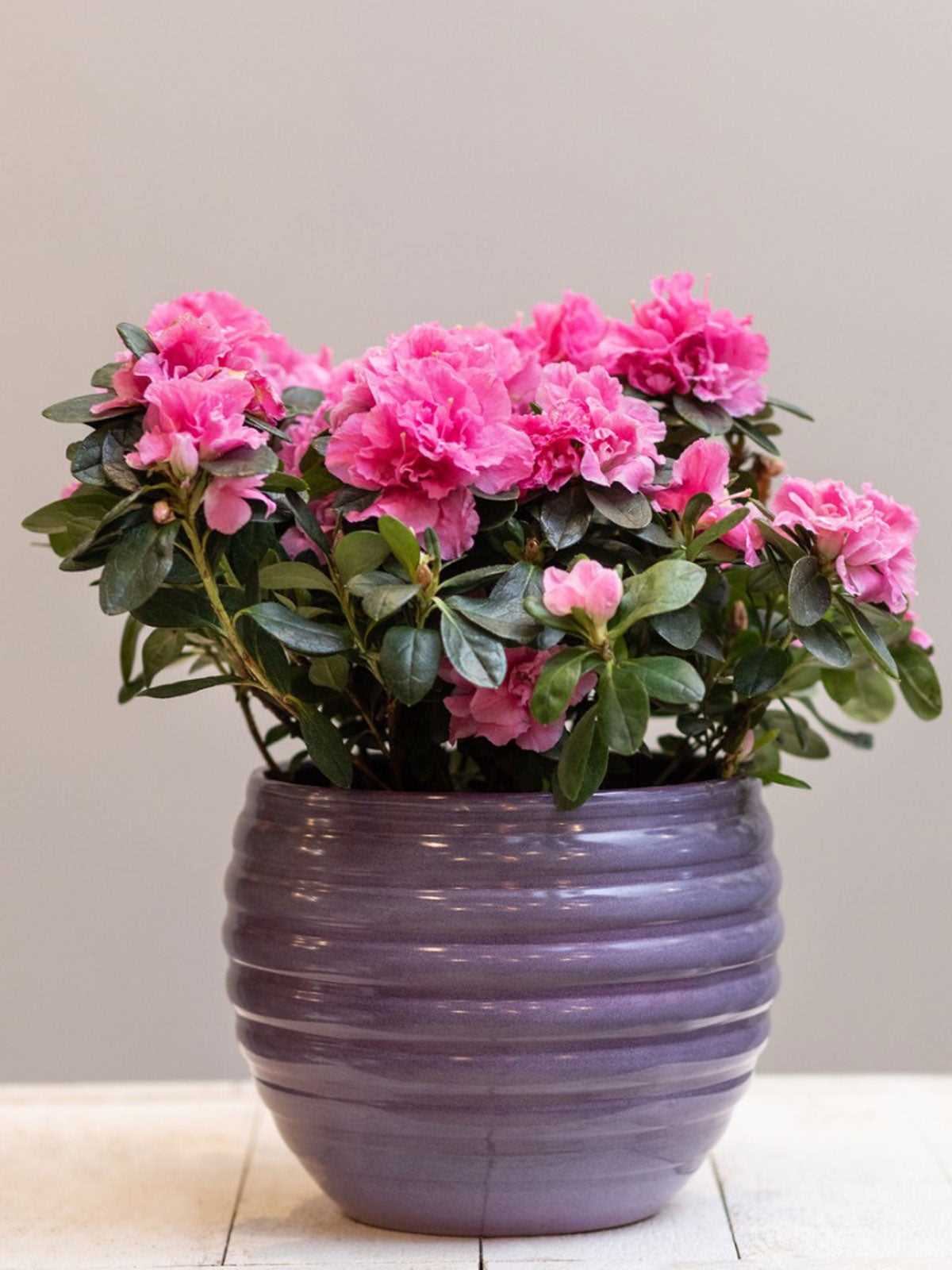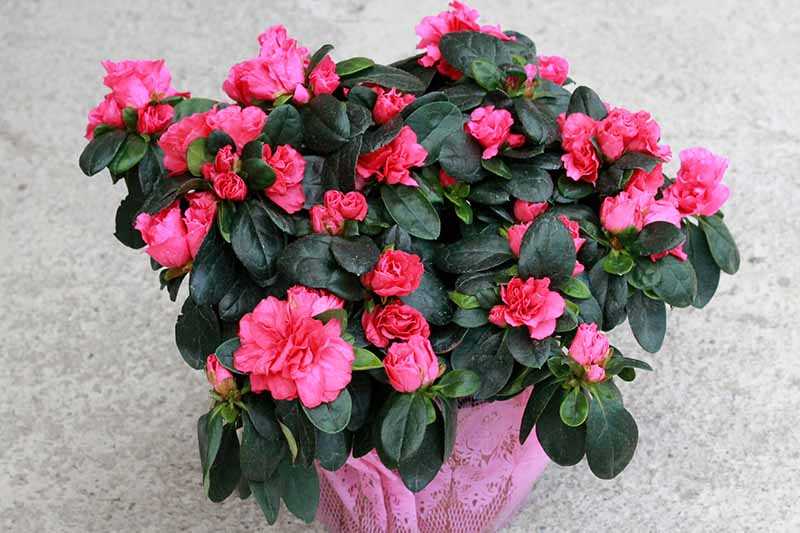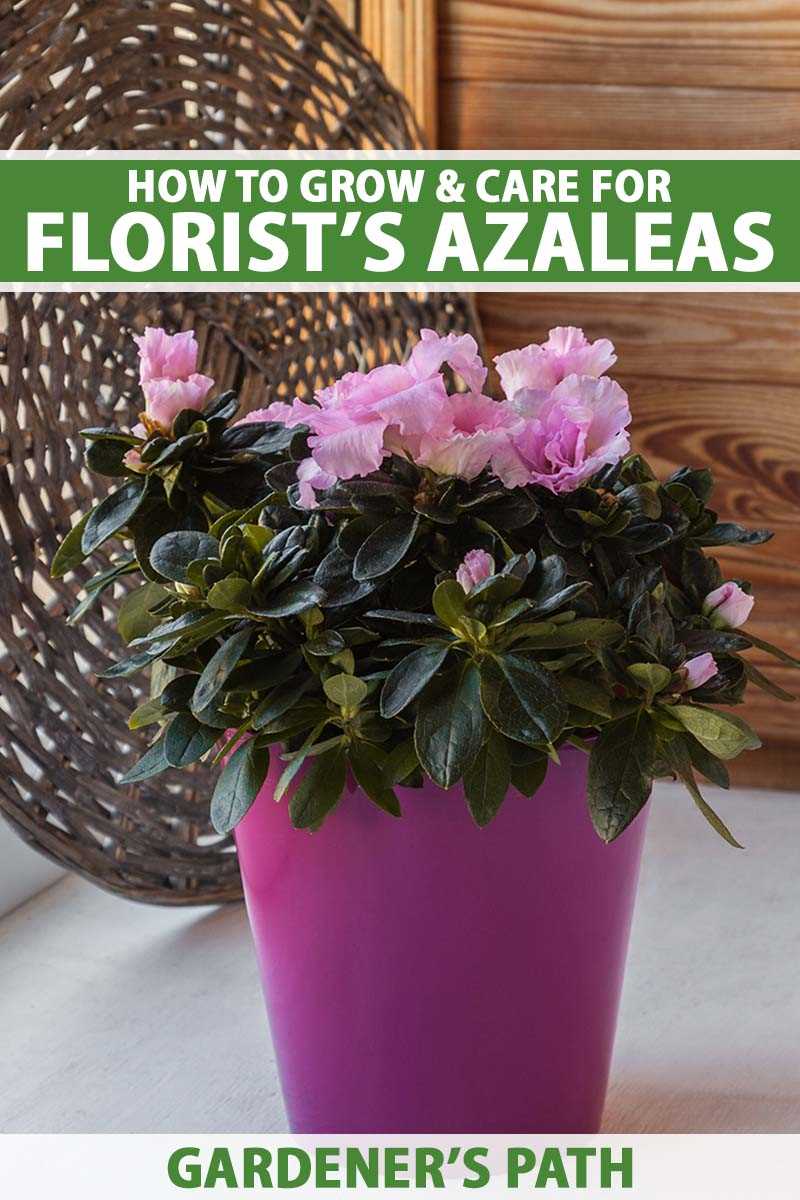- Choosing the Perfect Azalea Variety for Your Home
- 1. Climate
- 2. Size
- 3. Flower Color
- 4. Blooming Season
- 5. Care Requirements
- The Best Location for Your Azalea Plants
- Sunlight
- Soil
- Temperature
- Wind
- Proximity to other plants
- Providing the Right Soil Conditions for Azaleas
- 1. pH Level
- 2. Moisture Retention
- 3. Texture
- 4. Nutrient Content
- 5. Mulching
- Watering Tips for Azalea Plants
- Fertilizing Azaleas: What You Need to Know
- 1. Choose the Right Fertilizer
- 2. Know When to Fertilize
- 3. Follow the Instructions
- 4. Apply Fertilizer Evenly
- 5. Water After Fertilizing
- 6. Monitor Plant Health
- Pruning and Shaping Your Azalea Plants
- When to Prune
- Tools for Pruning
- Pruning Techniques
- Shaping Azaleas
- Aftercare
- Protecting Your Azaleas from Pests and Diseases
- 1. Regular Inspections
- 2. Integrated Pest Management
- 3. Proper Watering and Drainage
- 4. Mulching
- 5. Pruning
- 6. Fertilization
- 7. Pest Control
- 8. Disease Management
- 9. Proper Planting
- 10. Consult an Expert
- Winter Care for Azaleas: Keeping Them Healthy and Beautiful
- 1. Protecting Azaleas from Freezing Temperatures
- 2. Preventing Winter Sunburn
- 3. Watering Azaleas Properly
- 4. Pruning Azaleas in Winter
- 5. Monitoring for Pests and Diseases
- 6. Feeding Azaleas during Winter
- Q&A:
- How often should I water my azalea plants?
- Can I grow azaleas indoors?
- What kind of soil do azaleas prefer?
- When is the best time to prune azaleas?
- Why are the leaves of my azalea turning yellow?
- Can I grow azaleas from seeds?
- How do I protect my azaleas from pests?
- Video: How to grow azalea from cuttings with aloevera | Azalea plant care
Welcome to “Azalea at Home,” where we aim to provide you with all the information you need to successfully grow and care for your azalea plants. Whether you’re a seasoned gardener or just starting out, azaleas are a beautiful addition to any home or garden. With their vibrant blooms and lush foliage, they can add a pop of color and interest to your indoor or outdoor spaces.
Have you ever wondered how to properly care for your azalea plants? Or maybe you’re curious about the different varieties available and which one would be best suited for your environment and aesthetic preferences. Throughout this article, we will answer these questions and more, so you can confidently grow and nurture your azaleas.
From understanding the ideal growing conditions, such as sunlight, watering, and soil requirements, to learning about common pests and diseases that may affect your azalea plants, we’ve got you covered. We’ll also discuss the importance of pruning and how to do it correctly to promote healthy growth and maintain a desirable shape.
“Azalea at Home” is your go-to resource for everything azalea-related. Whether you have questions about planting, caring, or troubleshooting, we’re here to help. Join us on this exciting journey of azalea gardening and create a stunning floral display at your home.
Choosing the Perfect Azalea Variety for Your Home
When it comes to choosing the perfect azalea variety for your home, there are several factors to consider. The right variety will depend on your specific needs and preferences.
1. Climate
Azaleas are native to several regions around the world, and the climate in your area will determine which varieties are best suited for your home. Some azaleas thrive in cooler climates, while others prefer warmer temperatures.
Research the climate requirements for different azalea varieties to ensure that you choose one that will thrive in your region.
2. Size
Azaleas come in a variety of sizes, from compact dwarf varieties to larger, more sprawling types. Consider the space you have available in your home and choose a variety that fits well in the area you have in mind.
Keep in mind that some azaleas can be pruned to maintain a smaller size, while others may require more space to grow and spread out.
3. Flower Color
One of the most attractive features of azaleas is their vibrant flowering displays. Azalea flowers come in a wide range of colors, including shades of pink, red, purple, white, and more.
Consider your personal preferences for flower colors and choose a variety that matches your tastes or complements the other colors in your home or garden.
4. Blooming Season

Azaleas bloom at different times of the year, depending on the variety. Some varieties bloom in the spring, while others may produce flowers in the summer or fall.
If you’re looking for azaleas that will add a pop of color to your spring garden, choose a variety that blooms during that season. If you prefer azaleas that will bloom during a different time of the year, select a variety that matches your desired blooming season.
5. Care Requirements
Different azalea varieties have varying care requirements. Some varieties may be more high maintenance, requiring specific soil conditions, regular pruning, or more frequent watering.
Consider the amount of time and effort you’re willing to dedicate to caring for your azaleas and choose a variety that fits within your gardening capabilities.
By considering these factors, you can choose the perfect azalea variety for your home and enjoy the beauty of these stunning plants all year round.
The Best Location for Your Azalea Plants
Choosing the right location for your azalea plants is crucial for their growth and overall health. Here are some factors to consider when selecting a spot for your azaleas:
Sunlight
Azaleas thrive in partially shaded areas, such as under the canopy of tall trees or on the east or north side of a building. They prefer morning sunlight and filtered shade during the afternoon. Avoid planting them in full sun, as it can damage the leaves and cause the plants to wilt.
Soil

Azaleas require well-drained soil that is rich in organic matter. Avoid planting them in heavy clay soil or areas with poor drainage, as it can lead to root rot. Test the soil pH to ensure it falls within the acidic range of 4.5 to 6.0, as azaleas prefer acidic soil conditions.
Temperature
Azaleas are generally hardy in USDA zones 5 to 9, depending on the variety. However, extreme temperatures can stress the plants and affect their blooming. Choose a location where the temperature is within the recommended range for your specific azalea variety.
Wind
Azaleas are susceptible to wind damage, so it’s important to choose a location that offers some protection from strong winds. Planting them near a fence, wall, or other windbreak can help shield them from gusts of wind.
Proximity to other plants
Azaleas are shallow-rooted plants, and they don’t compete well with other plants for water and nutrients. Make sure to give them enough space to grow and avoid planting them too close to other shrubs or trees.
By considering these factors, you can choose the best location for your azalea plants and provide them with the optimal conditions for growth and blooming.
Providing the Right Soil Conditions for Azaleas
Azaleas are beautiful flowering plants that require specific soil conditions in order to thrive. Providing the right soil conditions for azaleas is crucial for their overall health and growth. Here are some key factors to consider when preparing the soil for your azalea plants:
1. pH Level
Azaleas prefer acidic soil with a pH level between 4.5 and 6.0. This acidic environment helps the azaleas absorb nutrients effectively. You can test the pH level of your soil using a soil testing kit, which is available at most garden centers. If the pH level is too high, you can lower it by adding sulfur or acidic organic matter like pine needles or oak leaves to the soil.
2. Moisture Retention
Azaleas require moist but well-drained soil. The soil should be able to retain moisture without becoming waterlogged. To improve moisture retention, you can mix organic matter such as compost or peat moss into the soil. This will also help with nutrient absorption and promote healthy root growth.
3. Texture
Azaleas prefer a well-drained soil with a loose, friable texture. Sandy loam or loamy soil is ideal for azaleas. This type of soil allows for good drainage while retaining enough moisture for the plant’s roots. If your soil is heavy clay, you can amend it by adding organic matter to improve its texture and drainage ability.
4. Nutrient Content
Azaleas require a well-balanced nutrient supply to thrive. Before planting azaleas, it’s beneficial to add organic matter such as compost or well-rotted manure to the soil. This will enrich the soil with essential nutrients and improve its overall fertility. Additionally, you can use a slow-release fertilizer specifically formulated for acid-loving plants like azaleas to provide them with a steady supply of nutrients.
5. Mulching
Mulching around azaleas can help maintain soil moisture, suppress weeds, and provide insulation for the roots. Apply a layer of organic mulch, such as pine bark or wood chips, around the base of the plant, taking care not to pile it up against the trunk. This will also add organic matter to the soil as the mulch gradually breaks down.
By providing the right soil conditions for your azaleas, you can ensure they receive the necessary nutrients and moisture to thrive and produce beautiful blooms. Taking the time to prepare the soil before planting will greatly benefit the overall health and longevity of your azalea plants.
Watering Tips for Azalea Plants

Watering azalea plants properly is crucial for their health and growth. Here are some tips to help you ensure that your azaleas receive the right amount of water:
- Know the watering needs: Azaleas prefer slightly moist soil, so it is important to avoid both overwatering and underwatering. Check the soil regularly to determine the watering needs.
- Water deeply: When watering, make sure to water deeply so that the water reaches the roots. Shallow watering can lead to shallow root growth and weak plants.
- Water at the right time: Watering in the early morning or late afternoon is ideal. Watering during the hottest part of the day can cause the water to evaporate quickly.
- Use the right watering technique: It is best to water at the base of the plant, near the roots, rather than from above. This helps prevent the leaves from getting wet, which can lead to fungal diseases.
- Use a well-draining soil: Azaleas prefer well-draining soil that allows excess water to drain away. Avoid planting them in heavy clay soil that retains water.
- Adjust watering frequency: During hot and dry weather, azaleas may require more frequent watering. Conversely, during cooler and wetter periods, they may require less water.
Following these watering tips will help ensure that your azalea plants thrive and produce vibrant blooms. Remember to always monitor the moisture levels and adjust your watering accordingly.
Fertilizing Azaleas: What You Need to Know
Fertilizing is an important part of caring for azaleas. Here are some key things you need to know about fertilizing these beautiful plants.
1. Choose the Right Fertilizer
When it comes to fertilizing azaleas, it’s important to choose the right fertilizer. Look for a fertilizer specifically formulated for acid-loving plants, as azaleas prefer acidic soil. Opt for a slow-release fertilizer, as this will provide a steady supply of nutrients over a longer period of time.
2. Know When to Fertilize
Azaleas should be fertilized in early spring, just before they start to bloom. This will give them the nutrients they need to produce vibrant flowers. Avoid fertilizing in late summer or fall, as this can encourage new growth that may be damaged by winter frosts.
3. Follow the Instructions
Always read and follow the instructions on the fertilizer packaging. Different fertilizers have different concentrations and application rates, so it’s important to apply the correct amount. Over-fertilizing can burn the roots of azaleas and cause damage.
4. Apply Fertilizer Evenly

Spread the fertilizer evenly on the soil around the base of the azalea plants. Avoid applying it directly to the leaves or stems, as this can cause burns. Use a rake or your hands to gently work the fertilizer into the top layer of soil.
5. Water After Fertilizing
After applying fertilizer, be sure to water the plants thoroughly. This will help to activate the fertilizer and ensure that the nutrients reach the roots. Watering also helps to prevent any potential root burn that may occur if the fertilizer is not properly dissolved.
6. Monitor Plant Health
Keep an eye on the health of your azalea plants after fertilizing. If you notice any signs of stress, such as wilting or yellowing leaves, it could be a sign of over-fertilization. Adjust the amount of fertilizer you use in future applications to prevent damage to the plants.
By following these guidelines, you can ensure that your azaleas receive the right amount of nutrients to thrive and produce beautiful blooms.
Pruning and Shaping Your Azalea Plants
Pruning and shaping azalea plants is an important part of their care to maintain their overall health and appearance. Regular pruning helps to promote healthy growth, increase flower production, and maintain a compact and bushy shape.
When to Prune
The best time to prune your azalea plants is in the late spring or early summer, right after they have finished blooming. Pruning during this time allows the plants to recover and produce new growth before the next blooming season.
It is important to avoid pruning azaleas during the fall or winter as they may not have enough time to recover before the cold weather sets in. Pruning too late in the summer may also remove flower buds and reduce the following year’s bloom.
Tools for Pruning
Before you begin pruning, make sure you have the proper tools. Some essential tools for pruning azaleas include sharp pruning shears, a pruning saw for thicker branches, and gloves to protect your hands.
Pruning Techniques
When pruning your azalea plants, start by removing any dead, damaged, or diseased branches. Cut these branches back to where they meet the main stem or a healthy lateral branch.
To maintain a compact and bushy shape, it is also necessary to selectively prune back some of the longer branches. Cut these branches back to a healthy lateral branch or to a node where new growth can emerge.
Be sure to make clean cuts at a 45-degree angle to prevent damage and allow for faster healing. Avoid leaving stubs or cutting too close to the main stem.
Shaping Azaleas
If you want to shape your azalea plants into a specific form, such as a round or square shape, you can do so through pruning. Start by creating a rough outline of the desired shape, and then selectively prune branches to achieve that shape.
Remember to step back periodically to evaluate your progress and make adjustments as needed. It can be helpful to have a clear vision of the end result before you begin shaping your azaleas.
Aftercare
After pruning, be sure to clean up the area by removing any debris or fallen branches. This helps to prevent the spread of diseases and pests.
It is also important to provide your azaleas with proper care after pruning. This includes regularly watering, fertilizing, and providing them with the necessary sunlight and soil conditions for healthy growth.
By following these pruning and shaping techniques, you can help your azalea plants thrive and maintain a beautiful appearance year after year.
Protecting Your Azaleas from Pests and Diseases
Azaleas are beautiful flowering plants that can be vulnerable to various pests and diseases. Here are some tips to help you protect your azaleas and keep them healthy:
1. Regular Inspections
Inspect your azaleas regularly to catch any signs of pests or diseases early on. Look for any visible damage to the leaves, stems, or flowers, as well as any unusual discoloration or wilting.
2. Integrated Pest Management
Implement an integrated pest management (IPM) approach to control pests in a safe and environmentally friendly manner. This includes using a combination of cultural, biological, and chemical control methods.
3. Proper Watering and Drainage
Avoid overwatering your azaleas as it can create conditions favorable for diseases. Ensure they are well-drained and don’t let water sit around the roots for too long.
4. Mulching
Apply a layer of mulch around the base of your azaleas to help conserve moisture, regulate soil temperature, and suppress weeds. Use organic mulch such as wood chips or bark, but keep it away from direct contact with the stems to prevent rot.
5. Pruning
Regularly prune your azaleas to remove any dead or diseased branches. This helps improve air circulation and reduces the risk of fungal infections.
6. Fertilization
Properly fertilize your azaleas to promote healthy growth and increase their resistance to pests and diseases. Use a balanced fertilizer specifically formulated for acid-loving plants like azaleas.
7. Pest Control
Identify common pests that affect azaleas, such as azalea lace bugs, caterpillars, and spider mites. Use appropriate insecticides if necessary, but always follow the instructions carefully to avoid harming beneficial insects.
8. Disease Management
Be aware of common diseases that can affect azaleas, such as powdery mildew, leaf spots, and root rot. Take preventive measures, such as ensuring proper air circulation and avoiding overhead watering, to minimize the risk of disease.
9. Proper Planting
Plant your azaleas in well-drained soil and in an area with suitable light conditions. Avoid overcrowding to prevent stress and create a conducive environment for pests and diseases.
10. Consult an Expert
If you’re unsure about how to manage pests or diseases on your azaleas, consult a gardening expert or local plant nursery. They can provide specific advice based on your location and azalea variety.
By following these tips, you can protect your azaleas from common pests and diseases, ensuring they thrive and provide a beautiful display of vibrant flowers.
Winter Care for Azaleas: Keeping Them Healthy and Beautiful
During the winter months, azaleas require special care to ensure they stay healthy and beautiful. The following tips will help you keep your azaleas thriving during the colder months:
1. Protecting Azaleas from Freezing Temperatures
- Cover the plants with a layer of mulch to help insulate the soil and roots.
- Use burlap or frost blankets to protect azaleas from freezing temperatures, especially when the forecast calls for extreme cold.
- Avoid placing plastic directly over the plants, as it can trap moisture and cause damage.
2. Preventing Winter Sunburn
Azaleas can experience winter sunburn, especially when exposed to frosty morning sun. To prevent this:
- Plant azaleas in areas where they will receive morning sun and afternoon shade.
- Use shade cloth or a light fabric cover to provide some protection from direct sunlight during the winter months.
3. Watering Azaleas Properly
Proper watering is important for azaleas, even during the winter. Follow these guidelines:
- Water azaleas deeply before the ground freezes to ensure they have enough moisture.
- Check the soil moisture regularly and water if the soil feels dry to the touch.
- Avoid overwatering, as it can lead to root rot.
4. Pruning Azaleas in Winter
Winter is an ideal time to prune azaleas for shape and size. Follow these steps:
- Remove any dead or damaged branches first.
- Thin out crowded branches to improve air circulation and reduce the risk of disease.
- Shape the plant by trimming branches to maintain the desired form.
- Avoid heavy pruning during winter, as it can stimulate new growth that may be damaged by frost.
5. Monitoring for Pests and Diseases
Even during winter, azaleas can be susceptible to pests and diseases. Keep an eye out for:
- Aphids and spider mites, which can be controlled with insecticidal soap or horticultural oil.
- Azalea lace bugs, which can be treated with insecticides labeled for this pest.
- Common diseases like azalea leaf spot and powdery mildew, which can be prevented by applying fungicides as necessary.
6. Feeding Azaleas during Winter
Although azaleas are generally dormant in winter, they still benefit from some light feeding to promote overall health. Use a slow-release fertilizer specifically formulated for acid-loving plants. Apply the fertilizer according to package instructions, taking care not to over-fertilize.
By following these winter care tips, you can keep your azaleas healthy and beautiful throughout the colder months, ensuring their vibrant blooms return year after year.
Q&A:
How often should I water my azalea plants?
Azaleas prefer moist soil, so you should water them regularly. Check the soil moisture level with your finger. If it feels dry, it’s time to water. However, be careful not to overwater, as this can lead to root rot.
Can I grow azaleas indoors?
Azaleas can be grown indoors, but they require specific conditions to thrive. They need bright, indirect sunlight, cool temperatures, and high humidity. You may also need to supplement their light needs with artificial grow lights.
What kind of soil do azaleas prefer?
Azaleas prefer acidic, moist, and well-draining soil. You can achieve this by using a soil mix specially formulated for acid-loving plants or amending the soil with organic matter such as peat moss or compost.
When is the best time to prune azaleas?
The best time to prune azaleas is right after they finish blooming in the spring. Pruning later in the year may remove the flower buds for the next season. Use sharp pruning shears and make clean cuts just above a leaf node or bud.
Why are the leaves of my azalea turning yellow?
Yellowing leaves on azaleas can be a sign of several issues. It could be due to overwatering, poor drainage, nutrient deficiencies, or even pests. Check the soil moisture level, improve drainage if necessary, and consider fertilizing according to the specific needs of azaleas.
Can I grow azaleas from seeds?
Yes, you can grow azaleas from seeds, but it requires patience and specific conditions. Azalea seeds need a period of cold stratification to break their dormancy. Sow the seeds in a well-draining soil mix, keep them moist, and provide them with the right temperature and light conditions for germination.
How do I protect my azaleas from pests?
To protect your azaleas from common pests like aphids, spider mites, and azalea lace bugs, you can regularly inspect the leaves for any signs of infestation and treat them with insecticidal soap or neem oil. Ensuring good air circulation and maintaining plant health can also help prevent pest issues.
Video:
How to grow azalea from cuttings with aloevera | Azalea plant care







